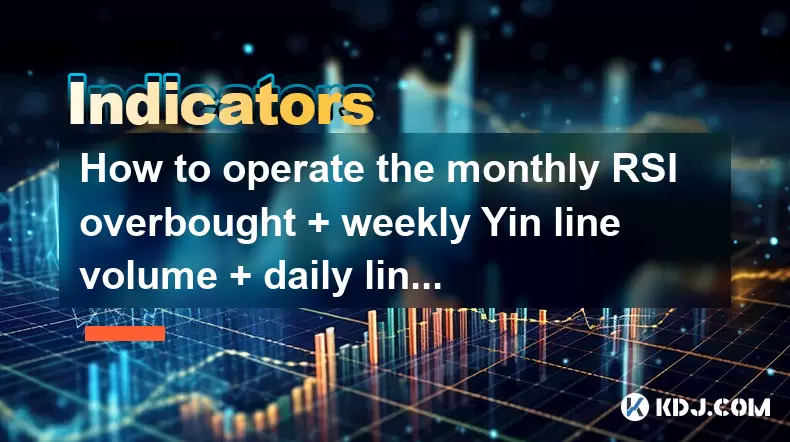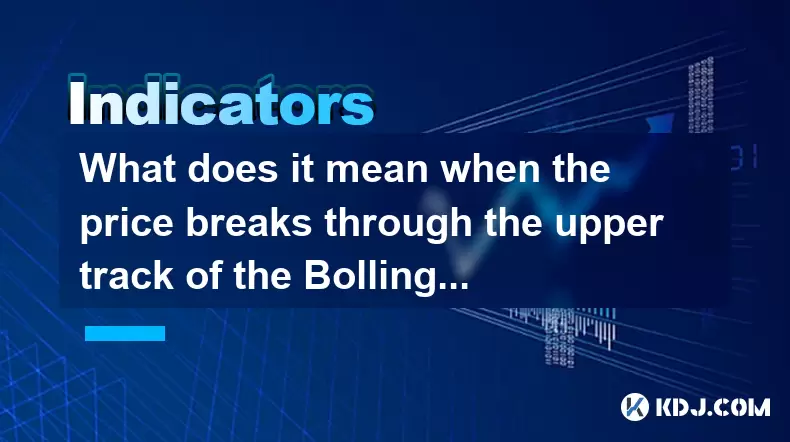-
 Bitcoin
Bitcoin $117500
-0.66% -
 Ethereum
Ethereum $3760
-1.24% -
 XRP
XRP $3.087
-2.54% -
 Tether USDt
Tether USDt $0.9999
-0.01% -
 BNB
BNB $803.6
-4.03% -
 Solana
Solana $180.3
-4.15% -
 USDC
USDC $0.9998
-0.01% -
 Dogecoin
Dogecoin $0.2218
-4.92% -
 TRON
TRON $0.3366
3.71% -
 Cardano
Cardano $0.7785
-3.73% -
 Hyperliquid
Hyperliquid $42.90
-4.75% -
 Sui
Sui $3.797
-7.45% -
 Stellar
Stellar $0.4165
-2.32% -
 Chainlink
Chainlink $17.65
-4.17% -
 Bitcoin Cash
Bitcoin Cash $561.0
-3.86% -
 Hedera
Hedera $0.2611
-4.54% -
 Avalanche
Avalanche $24.33
-7.02% -
 UNUS SED LEO
UNUS SED LEO $8.972
0.06% -
 Litecoin
Litecoin $107.6
-2.79% -
 Toncoin
Toncoin $3.254
-1.84% -
 Shiba Inu
Shiba Inu $0.00001306
-4.69% -
 Ethena USDe
Ethena USDe $1.001
0.00% -
 Uniswap
Uniswap $10.10
-4.83% -
 Polkadot
Polkadot $3.902
-4.63% -
 Monero
Monero $315.1
-2.57% -
 Dai
Dai $1.000
0.02% -
 Bitget Token
Bitget Token $4.499
-2.53% -
 Pepe
Pepe $0.00001145
-7.38% -
 Cronos
Cronos $0.1479
6.07% -
 Aave
Aave $281.3
-4.07%
How to operate the monthly RSI overbought + weekly Yin line volume + daily line breaking through the 10-day line?
A monthly RSI above 70, weekly bearish candle with high volume, and daily close below the 10-day SMA signal a potential crypto downturn.
Jul 29, 2025 at 09:50 am

Understanding the Components of the Trading Strategy
This strategy combines three distinct technical indicators across different timeframes: the monthly RSI overbought condition, the weekly Yin (bearish) candlestick pattern with volume confirmation, and the daily price breaking below the 10-day moving average. Each element plays a critical role in identifying a potential reversal or downtrend in cryptocurrency prices. The Relative Strength Index (RSI) on the monthly chart helps determine long-term momentum exhaustion. When RSI exceeds 70, it is traditionally considered overbought, indicating that the asset may be overvalued and due for a correction.
The weekly Yin candle refers to a bearish candlestick where the closing price is lower than the opening price, suggesting selling pressure. When this occurs with above-average volume, it strengthens the bearish signal, implying institutional or large-scale selling. Lastly, the daily price breaking below the 10-day moving average acts as a short-term confirmation that momentum is shifting downward. Combining these signals across multiple timeframes increases the reliability of the trade setup.
Setting Up the Monthly RSI Overbought Signal
To identify the monthly RSI overbought condition, open your preferred cryptocurrency charting platform such as TradingView, Binance, or Bybit. Navigate to the monthly timeframe (1M) for the asset you are analyzing, such as Bitcoin or Ethereum. Apply the RSI indicator with the default period of 14. Wait for the RSI value to rise above 70. This level indicates that the asset has experienced strong upward momentum over the past several weeks and may be vulnerable to a pullback.
It is crucial to ensure that the RSI remains above 70 for at least one full monthly candle to avoid false signals from short-term spikes. You can confirm this by checking the RSI value at the close of the month. If the RSI is above 70 and the price is near a known resistance level or shows signs of exhaustion (like long upper wicks), the overbought signal gains strength. This does not mean an immediate sell-off will occur, but it sets the stage for a potential reversal when combined with other bearish signals.
Confirming the Weekly Bearish Candle with Volume
After identifying the monthly overbought condition, shift your focus to the weekly chart (1W). Look for a Yin (red or black) candle where the closing price is significantly lower than the opening price. This visual pattern indicates that sellers dominated the week. The presence of high trading volume during this candle is essential, as it confirms strong market participation in the sell-off.
To verify volume, ensure the volume bar for the current or most recent weekly candle is higher than the average of the previous 3–5 weeks. A sudden spike in volume during a bearish candle suggests that large traders or institutions may be exiting positions. This combination of bearish close + high volume increases the probability of a trend reversal. It is also helpful to check for additional bearish patterns such as a bearish engulfing, dark cloud cover, or shooting star on the weekly chart to strengthen the signal.
Monitoring the Daily 10-Day Moving Average Break
Once the monthly and weekly conditions are met, the final confirmation comes from the daily chart (1D). Add the 10-day simple moving average (SMA) to your chart. This moving average smooths out price data and acts as a dynamic support level during uptrends. When the price breaks below this line on a closing basis, it suggests short-term momentum has shifted bearish.
Wait for the daily candle to close below the 10-day SMA to avoid false breakouts caused by intraday volatility. For example, if Bitcoin closes below its 10-day SMA after several days of consolidation or lower highs, it confirms weakening bullish momentum. This break should occur within one to two weeks after the weekly Yin candle forms, ensuring the signals are aligned in time. The closer the timing between the weekly bearish signal and the daily breakdown, the stronger the setup.
Executing the Trade Based on the Combined Signals
When all three conditions are satisfied:
- Monthly RSI > 70
- Weekly bearish candle with high volume
- Daily close below 10-day SMA
You can consider entering a short position or reducing long exposure. On exchanges that support margin or futures trading, such as Binance or Bybit, open a short trade with a leverage appropriate to your risk tolerance. Set a stop-loss slightly above the recent swing high on the daily chart to protect against a false breakdown. For example, place the stop-loss 2–3% above the breakdown candle’s high.
Define a take-profit level based on key support zones from the past few months. Alternatively, use a risk-reward ratio of at least 1:2, meaning if you risk 5%, aim for a 10% profit. Monitor the trade daily and adjust stop-loss downward as the price declines to lock in profits. If you are not comfortable with shorting, consider exiting long positions or hedging with put options if available.
Backtesting the Strategy for Reliability
Before applying this strategy live, backtest it on historical data. Select major cryptocurrencies like BTC or ETH and review past monthly RSI readings above 70. For each instance, check whether a weekly Yin candle with high volume followed, and whether the daily price broke below the 10-day SMA shortly after. Record the outcomes: did the price decline by 10%, 20%, or more in the following weeks?
Use TradingView’s bar replay mode or Python-based backtesting tools like Backtrader to automate this process. Count the number of successful signals (price dropped significantly) versus false signals (price resumed upward). A win rate above 60% with favorable risk-reward suggests the strategy is viable. Adjust parameters if needed, such as requiring RSI above 75 for stronger overbought conditions or using a 5% price drop below the 10-day SMA for confirmation.
Frequently Asked Questions
What if the monthly RSI is overbought but the weekly candle is not bearish?
Wait for confirmation. An overbought RSI alone is not enough. The strategy requires all three conditions to align. Premature action may lead to losses if the trend continues.
Can this strategy be used on altcoins?
Yes, but with caution. Altcoins often have lower liquidity and higher volatility. Ensure the altcoin has sufficient trading volume and a reliable price history before applying this multi-timeframe approach.
How do I calculate the 10-day moving average manually?
Add the closing prices of the last 10 days and divide by 10. Most platforms do this automatically, but understanding the formula helps verify accuracy.
What time of day should I check for the daily close below the 10-day SMA?
Check after the UTC daily candle closes at 00:00. This ensures you are evaluating a complete candle rather than an incomplete one.
Disclaimer:info@kdj.com
The information provided is not trading advice. kdj.com does not assume any responsibility for any investments made based on the information provided in this article. Cryptocurrencies are highly volatile and it is highly recommended that you invest with caution after thorough research!
If you believe that the content used on this website infringes your copyright, please contact us immediately (info@kdj.com) and we will delete it promptly.
- Bitcoin Price Drop: Navigating the Dip with Corporate Strategies
- 2025-07-30 07:30:12
- BNB's Bullish Cycle: ChatGPT Weighs In on the Future
- 2025-07-30 06:50:12
- XRP's Wild Ride: Open Interest, Price Crash Fears, and What's Next
- 2025-07-30 07:50:12
- SEC Greenlights In-Kind Creations: A Game Changer for Bitcoin ETPs?
- 2025-07-30 07:50:12
- Arbitrum (ARB) Price Prediction: Navigating the Ups and Downs of the Best ETH Eco
- 2025-07-30 06:50:12
- Ethereum, Ruvi AI, Presale: The Next Big Thing in Crypto?
- 2025-07-30 07:30:12
Related knowledge

What does it mean when the EMA combination crosses upward for the first time after sideways trading?
Jul 28,2025 at 03:43pm
Understanding the EMA and Its Role in Technical AnalysisThe Exponential Moving Average (EMA) is a widely used technical indicator in cryptocurrency tr...

What does it mean when the price breaks through the upper track of the Bollinger Band but the RSI is overbought?
Jul 30,2025 at 03:35am
Understanding Bollinger Bands and Their Upper TrackBollinger Bands are a widely used technical analysis tool developed by John Bollinger. They consist...

What signal does the ROC send when it rises rapidly from a low level and breaks through the zero axis?
Jul 27,2025 at 10:15am
Understanding the Rate of Change (ROC) IndicatorThe Rate of Change (ROC) is a momentum-based oscillator used in technical analysis to measure the perc...

What does it mean when the moving averages are glued together and a gap appears?
Jul 29,2025 at 07:49pm
Understanding Moving Averages in Cryptocurrency TradingMoving averages are among the most widely used technical indicators in the cryptocurrency tradi...

What does it mean when TEMA breaks through the long-term downward trend line?
Jul 29,2025 at 02:50pm
Understanding the Role of Smart Contracts in Decentralized Finance (DeFi)Smart contracts are self-executing agreements with the terms of the agreement...

What does it mean when the price breaks through the double bottom neckline and the moving averages are arranged in a bullish pattern?
Jul 28,2025 at 10:57am
Understanding the Double Bottom PatternThe double bottom is a widely recognized reversal chart pattern in technical analysis, particularly within the ...

What does it mean when the EMA combination crosses upward for the first time after sideways trading?
Jul 28,2025 at 03:43pm
Understanding the EMA and Its Role in Technical AnalysisThe Exponential Moving Average (EMA) is a widely used technical indicator in cryptocurrency tr...

What does it mean when the price breaks through the upper track of the Bollinger Band but the RSI is overbought?
Jul 30,2025 at 03:35am
Understanding Bollinger Bands and Their Upper TrackBollinger Bands are a widely used technical analysis tool developed by John Bollinger. They consist...

What signal does the ROC send when it rises rapidly from a low level and breaks through the zero axis?
Jul 27,2025 at 10:15am
Understanding the Rate of Change (ROC) IndicatorThe Rate of Change (ROC) is a momentum-based oscillator used in technical analysis to measure the perc...

What does it mean when the moving averages are glued together and a gap appears?
Jul 29,2025 at 07:49pm
Understanding Moving Averages in Cryptocurrency TradingMoving averages are among the most widely used technical indicators in the cryptocurrency tradi...

What does it mean when TEMA breaks through the long-term downward trend line?
Jul 29,2025 at 02:50pm
Understanding the Role of Smart Contracts in Decentralized Finance (DeFi)Smart contracts are self-executing agreements with the terms of the agreement...

What does it mean when the price breaks through the double bottom neckline and the moving averages are arranged in a bullish pattern?
Jul 28,2025 at 10:57am
Understanding the Double Bottom PatternThe double bottom is a widely recognized reversal chart pattern in technical analysis, particularly within the ...
See all articles

























































































